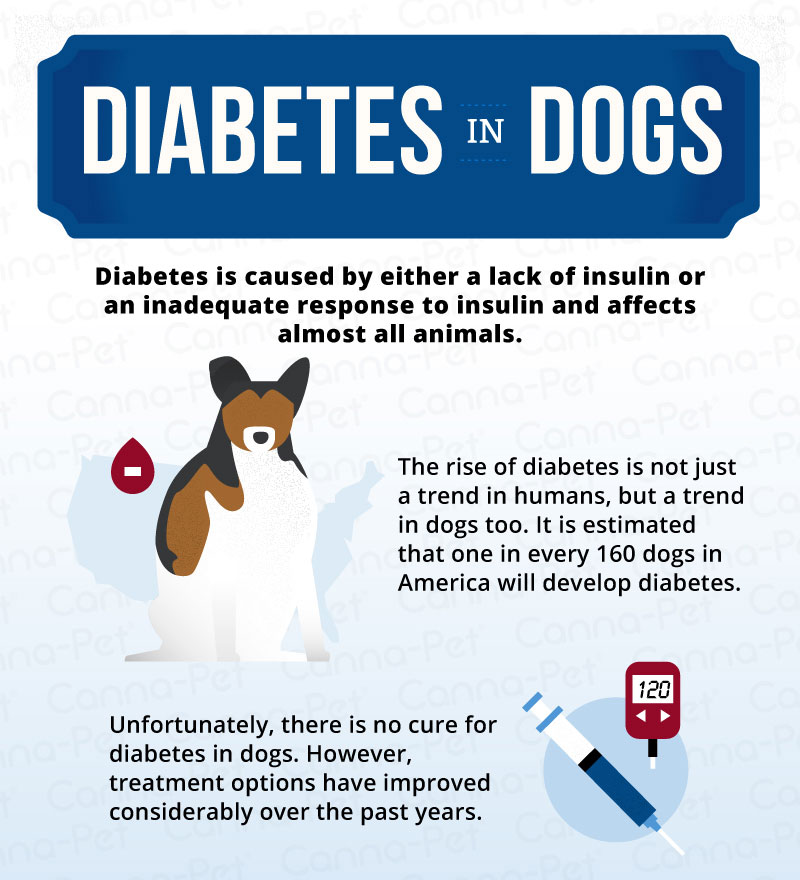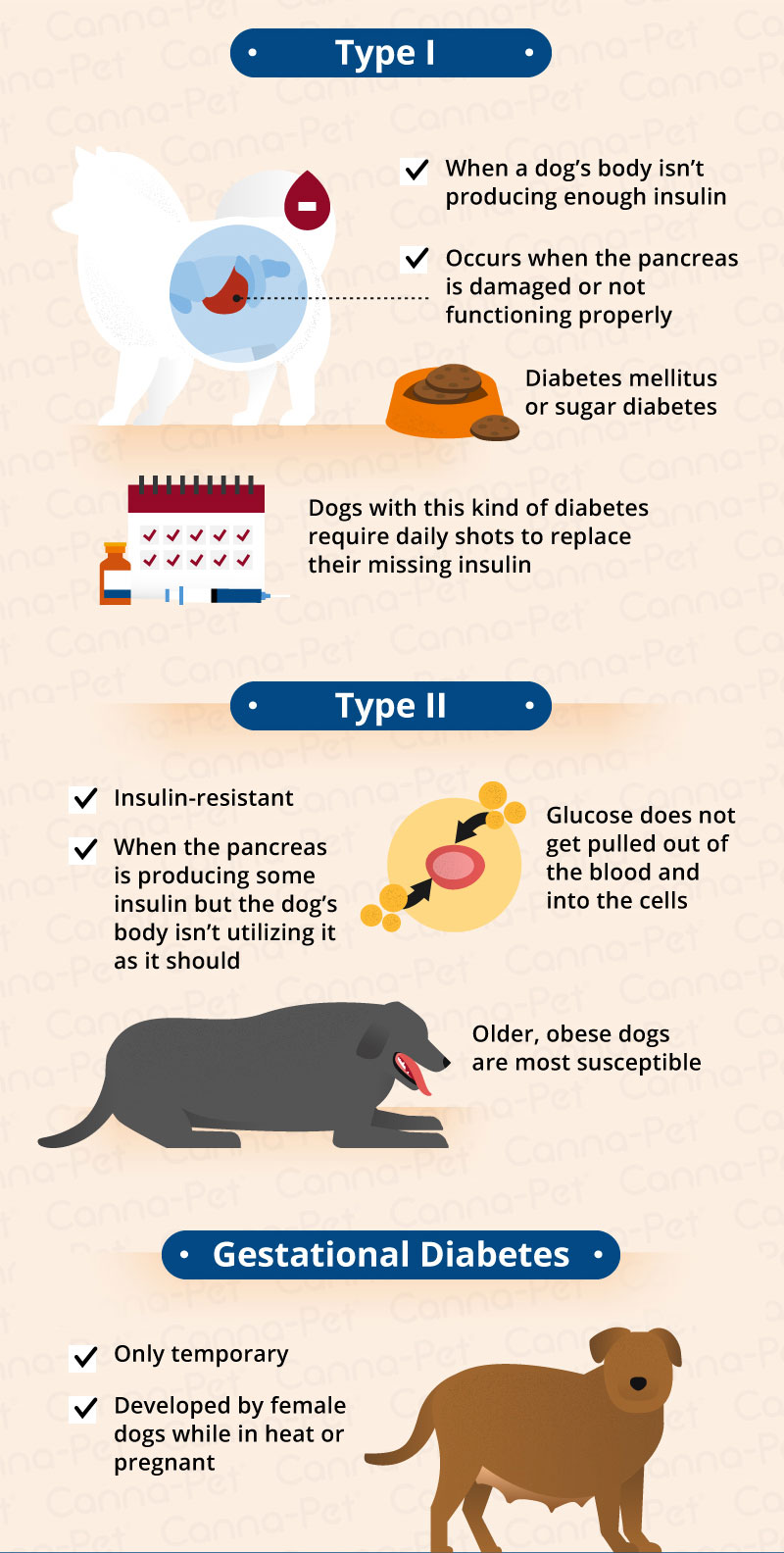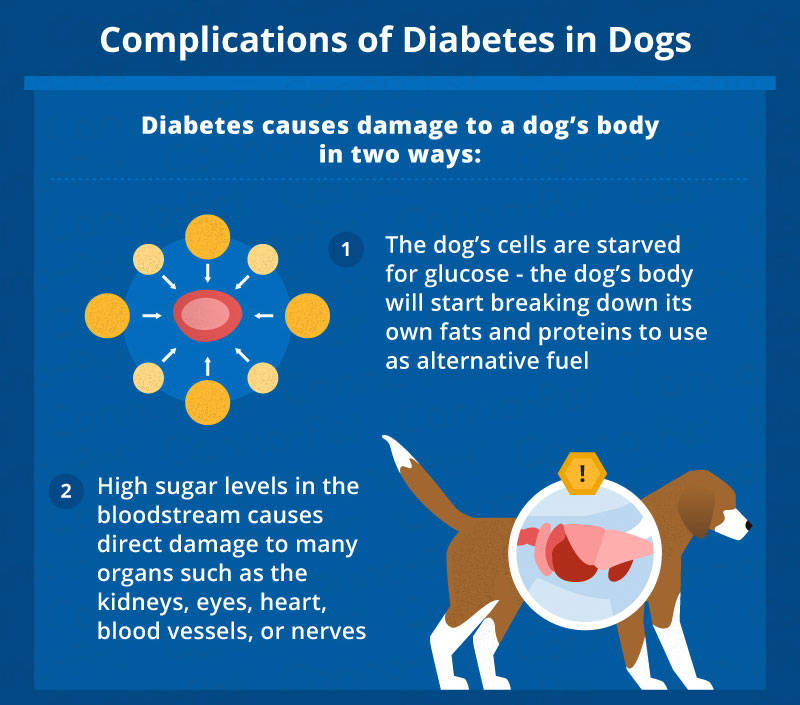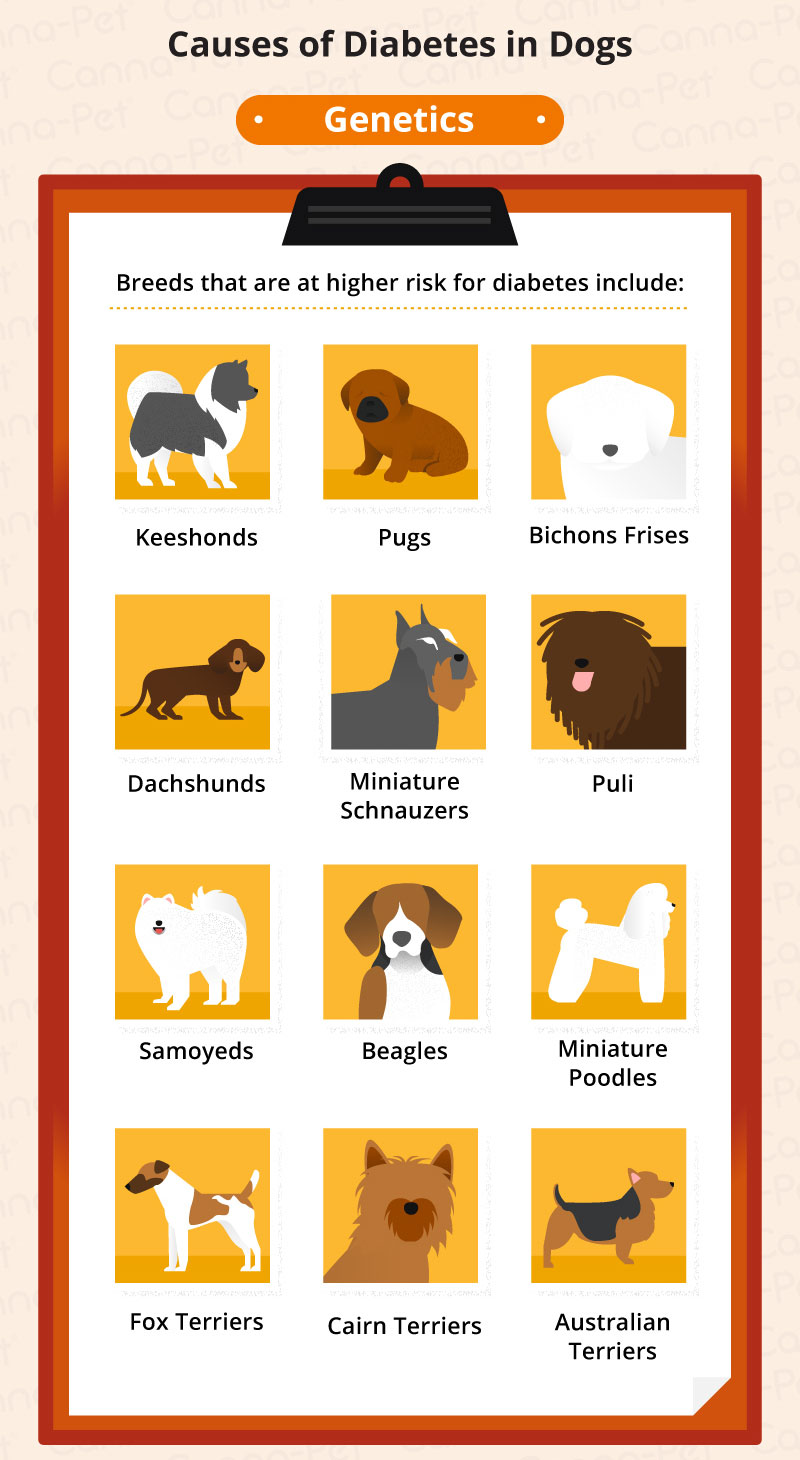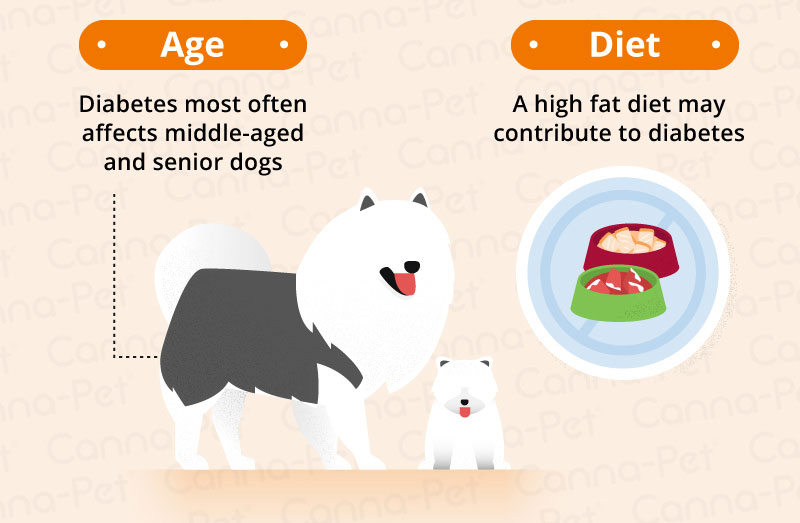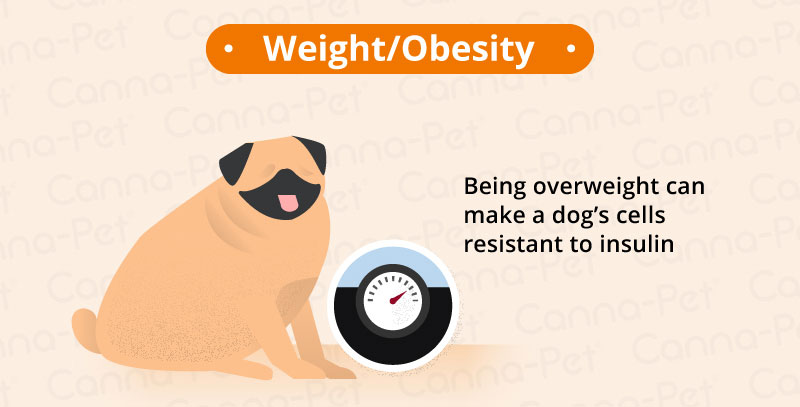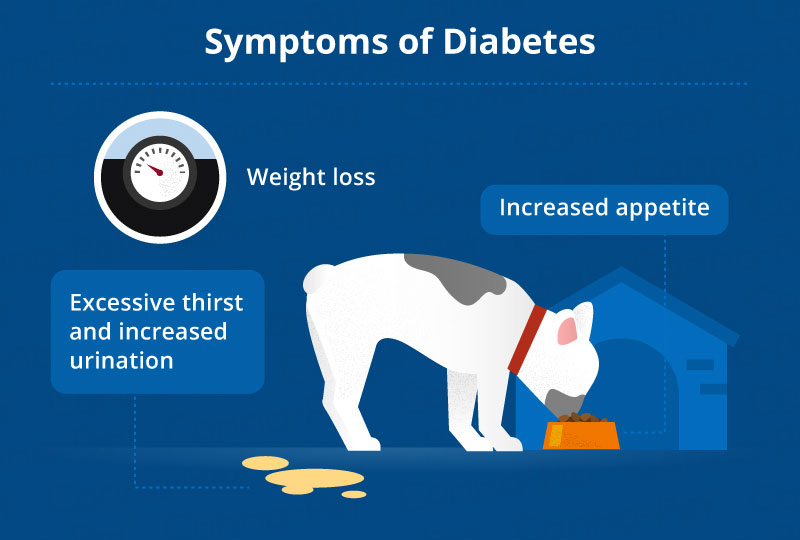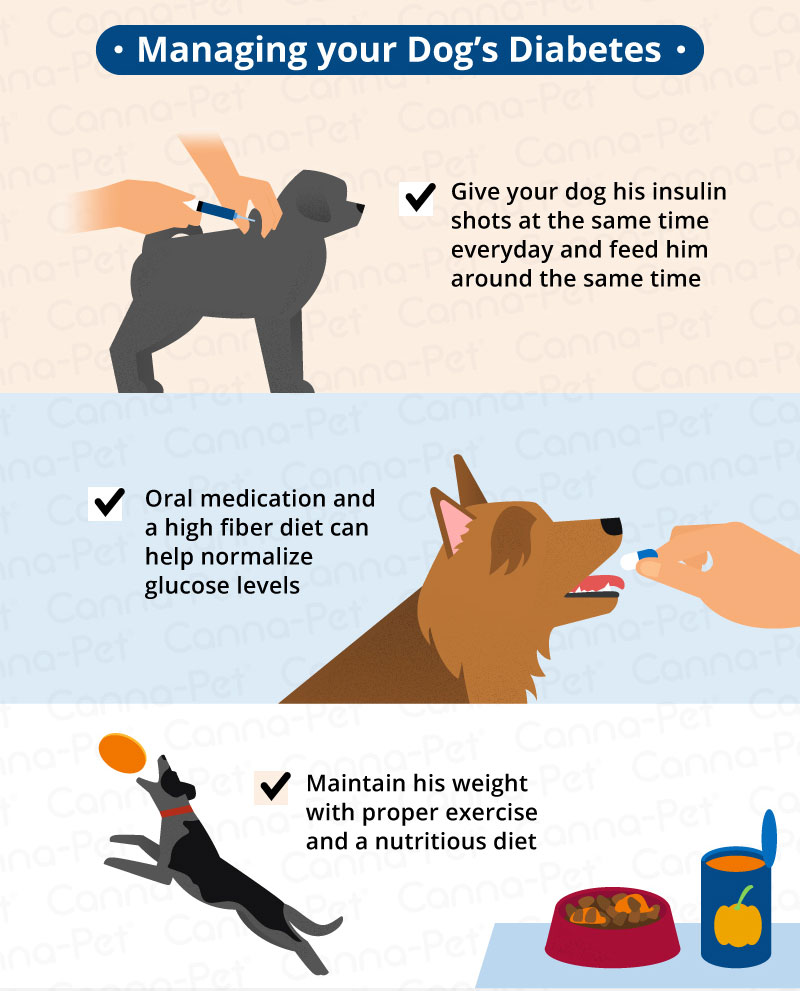Believe it or not, the recent surge in the occurrence of diabetes isn’t limited to humans –diabetes is also being found in dogs in rapidly growing numbers. In fact, researchers now estimate that one in 160 dogs in America will develop the disease.
While that might not seem like an alarming figure, keep in mind that this rate has more than tripled since 1970. While there is no cure for diabetes in dogs, there has been great progress in treatment options in recent years, and dogs with diabetes are now living longer, healthier lives. But it is treated differently than in humans, and requires careful blood sugar monitoring and daily insulin injections.
What is diabetes?
Diabetes is a chronic disease that can affect dogs and cats and other animals (including apes, pigs, and horses) as well as humans. In dogs, diabetes is a complex disease caused by either a lack of insulin or an inadequate response to insulin. Diabetes can’t be cured, but it can be managed very successfully.
To fully understand what diabetes is, it helps to understand some of this process.
The conversion of food nutrients into energy to power the body’s cells involves an ongoing relationship between glucose and insulin.
When food is digested, the body breaks down some of the nutrients (mainly carbohydrates) into glucose, a type of sugar that is an essential source of energy for certain cells and organs in the body. Glucose is absorbed from the intestines into the blood, which then transports it throughout the body.
While this is happening, an important organ next to the stomach called the pancreas releases the hormone insulin into the body. Insulin acts as the body’s “gatekeeper” that tells cells to grab glucose and other nutrients out of the bloodstream and use them as fuel.
Think of glucose as the fuel that your dog’s body runs on. In the case of diabetes, the relationship between glucose and insulin does not work as it should, and your dog’s blood sugar levels will rise. The cells don’t take in enough glucose, and as a result, it builds up in the blood. This elevated blood sugar is called hyperglycemia, and if left untreated, can starve the cells and the organs that soak in sugary blood will become damaged.
But diabetes is generally considered to be manageable, and with proper treatment, your dog’s diabetes can be managed so that they live happy, healthy lives and do not see their disease develop to this point.
Types of Dog Diabetes
When diabetes occurs, the glucose-insulin connection isn’t working as it should.
Like with humans, diabetes in dogs can be classified as either Type 1 or Type II.
Type I occurs when a dog’s body isn’t producing enough insulin. This is known as diabetes mellitus, or “sugar diabetes.” This is virtually the same as Type I diabetes in humans, formerly known as juvenile or insulin-dependent diabetes. This occurs when the pancreas is damaged or otherwise not functioning properly. Dogs with Type I diabetes require daily shots to replace the missing insulin.
Type II, formerly known as adult onset diabetes in humans, is actually the most common form of diabetes in humans and cats.
Type II, insulin-resistance diabetes, occurs when the pancreas is producing some insulin, but the dog’s body isn’t utilizing the insulin as it should. The dog’s cells don’t respond to the insulin’s “message,” so glucose does not get pulled out of the blood and into the cells.
This form is often linked to diet and obesity but is rarely found in dogs. However older, obese dogs would be the most susceptible.
Female dogs can also develop gestational diabetes (temporary insulin resistance) while in heat or pregnant.
Complications of Diabetes in Dogs
When a dog has diabetes, sugar will build up in his bloodstream, but his body’s cells that require the sugar are unable to access it. This causes damage to a diabetic dog’s body in two primary ways.
First, the dog’s cells are starved for that vital fuel mentioned above: glucose. Muscle cells and organ cells need glucose for energy. With glucose missing, the dog’s body will search for other methods of fuel, and start breaking down its own fats and proteins to use as alternative fuel.
Second, high sugar levels in the bloodstream causes direct damage to many organs. When the insulin needed to convert glucose in the bloodstream into fuel is missing, high levels of glucose build up in the blood. This glucose buildup can eventually cause damage to multiple organs, including the kidneys, eyes, heart, blood vessels, or nerves.
What dogs are most at risk for diabetes?
There are several factors that can raise a dog’s risk for developing diabetes.
Genetics/Breed
Because some breeds appear to be more susceptible to developing diabetes than other, it is thought that there is a genetic component to diabetes. Diabetes can occur in any breed or mixed-breed, but a study that examined diabetes rates in thousands of American dogs found that overall, mixed-breed dogs were more prone to diabetes than purebreds.
Among purebreds, breeds varied greatly in their susceptibility, but those with higher risk include Miniature Poodles, Bichons Frises, Pugs, Dachshunds, Miniature Schnauzers, Puli, Samoyeds, Keeshonds, Australian Terriers, Fox Terriers, Cairn Terriers, and Beagles.
Age
Diabetes most often affects middle-aged and senior dogs, with 70 percent of patients older than seven at the time of diagnosis. It can occur at any age, but mainly develops later in a dog’s life. Diabetes very rarely occurs in dogs younger than one year of age.
Diet
Going along with obesity, a diet high in fat may contribute to pancreatitis.
Gender
Female dogs and neutered male dogs are more likely than intact males to get diabetes. Unspayed female dogs are twice as likely as male dogs to have diabetes.
Weight/Obesity
Being overweight can make a dog’s cells resistant to insulin, but it’s unclear whether it actually causes diabetes in dogs. However, obese dogs are at major risk for developing pancreatitis, which can lead to diabetes.
Chronic or repeated pancreatitis
Chronic or repeated pancreatitis will eventually cause extensive damage to the pancreas, with the result being diabetes.
Steroid medications
Long-term usage of steroids can cause diabetes.
Other health conditions
There are some autoimmune disorders and viral diseases that may possibly trigger diabetes. This includes Cushing’s disease, where the body overproduces steroids internally.
Causes of Diabetes in Dogs
As with many diseases in dogs, the exact cause of diabetes is unknown. But there are many factors that are thought to be involved in its development. These include autoimmune disease, genetics, obesity, chronic pancreatitis, certain medications, and abnormal protein deposits in the pancreas. These can all play a major role in the development of the disease.
It’s estimated that about half of all cases of canine diabetes are linked to pancreatic damage caused by autoimmune disorders. The disorders can be caused by genetic predisposition, environmental factors, and more. Meanwhile, holistic veterinarians speculate that these disorders might be related to an overstimulation of the immune system from processed foods, multiple vaccinations, or other environmental factors.
Chronic pancreatitis, an inflammation of the pancreas, contributes to around 30 percent of canine diabetes. Pancreatic disease can also lead to exocrine pancreatic insufficiency, or EPI, which results in a deficiency of digestive enzymes.
The remaining 20 percent of dogs that develop diabetes suffer from other health conditions, such as Cushing’s disease and acromegaly, which is the production of too much growth hormone. Diabetes can also result from the long-term use of steroids, such as prednisone.
Diabetes Symptoms in Dogs
There are many things you can look for that might be signs of a dog with diabetes. Several early signs of diabetes in dogs include:
Excessive thirst and increased urination
Your dog may drink frequently and empty his water bowl more often than usual. And because your dog is drinking more, he may ask to go outside frequently and may start having accidents in the house. This increased thirst and urination happens because the body is trying to get rid of excess sugar by sending it out through urine, along with water that bonds to the sugar.
Weight loss
Even though your dog appears to be eating normally, he may start to lose weight. This is because his body isn’t efficiently converting nutrients from his food, which may be a sign of diabetes.
Increased appetite
For the same reason, your dog may actually have an increase in its appetite, and want to eat more often.
In more advanced cases of diabetes, symptoms can become more pronounced and go the opposite direction in the form of a loss of appetite. Your dog might also display a lack of energy, depression, or even vomiting.
If your dog has had diabetes for a while and it has gone untreated, it can lead to cataracts, an enlarged liver, urinary tract infections, seizures, kidney failure or even ketoacidosis, a potentially life-threatening condition.
How is diabetes in dogs diagnosed?
Your veterinarian will check for diabetes by conducting tests on your dog’s glucose levels in the blood and urine. Other indications of diabetes, like high liver enzymes and imbalances in your dog’s electrolytes, may also show up in the test. Other diseases may have similar tests, so your veterinarian may run additional tests to rule these out.
After the initial diagnosis, your vet will determine your dog’s serial blood glucose–concentration curve to determine the appropriate insulin dosage and schedule for your pup. This is done by measuring your dog’s glucose level repeatedly for several hours.
Treating Diabetes in Dogs
Your dog’s treatment plan will vary depending on a few factors, including the severity of his symptoms, the results of the lab work, and if any other health issues are present that could complicate therapy. Each plan is tailored to the individual dog and is continued throughout the rest of his life.
Regardless of your dog’s treatment plan, the goal will be the same — to keep blood glucose levels close to normal—roughly between 65 and 120 mg/dl. This will help your dog feel comfortable now and be less likely to develop diabetes-related problems later in life.
Dogs will almost always be treated with twice-daily insulin injections. Your vet will teach you how to give your dog these shots at home. Your dog will rely on these shots to survive.
Those dogs that have had diabetes for a while and have gone untreated may require a stay in the animal hospital for a measure of time to regulate their blood sugar.
What can I do to manage my diabetic dog’s health at home?
As mentioned above, you will be the one administering your dog’s twice-daily insulin shots, but there is more you can do to help manage your dog’s health.
First, it’s important to make sure you give your dog his shots at the same time every day and feed your dog around that same time. This boosts the nutrients in the blood to coincide with the peak insulin levels produced by the shot, and keep your dog’s blood sugar levels normal. Insulin levels that are too high or too low can be dangerous. Your vet will help you create a schedule and diet.
Oral medication and a high-fiber diet can also help to normalize glucose levels in the blood. It is important to avoid treats that are high in glucose. Your vet may also show you how to perform glucose tests at home.
Along with the diet, your vet will also help you put together an exercise program for your dog to help maintain his weight. Exercise can help avoid sudden spikes and drops in your dog’s glucose levels. A moderate but consistent exercise routine is best.
Please also consult your vet about a consistent, daily exercise program and proper nutrition for your dog to help keep his weight in check. While a diabetes diagnosis for your dog can be scary, with a proper routine and treatment plan, your dog can still enjoy a happy, healthy life.
Can I prevent my dog from getting diabetes?
While there is no clear-cut “yes” to the question, as some diabetes may be inherited, keeping your dog on a healthy diet and exercise regimen is your best course of action to help prevent the onset of the disease in older dogs.
If you think your dog is displaying any of the symptoms above, make sure to see your veterinarian as soon as possible to ensure you catch the disease early and treat it as successfully as possible.


